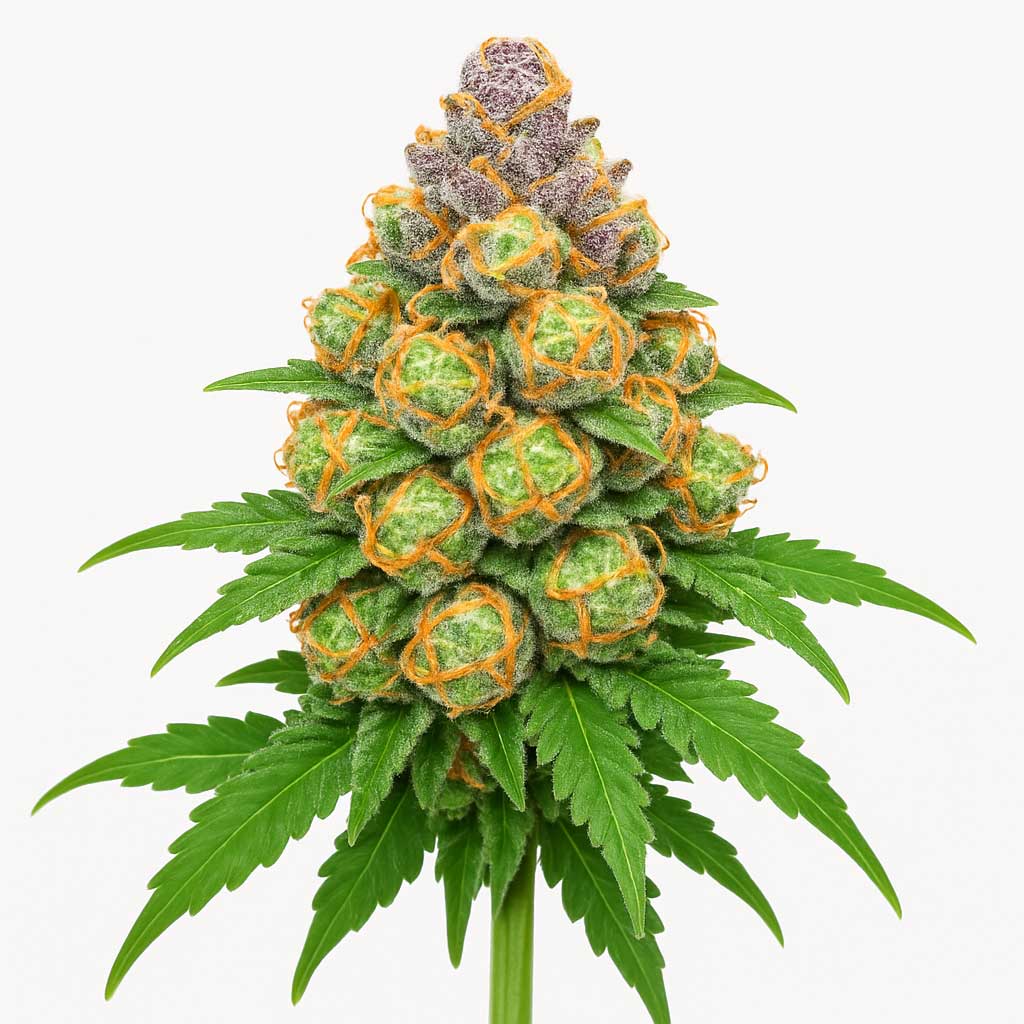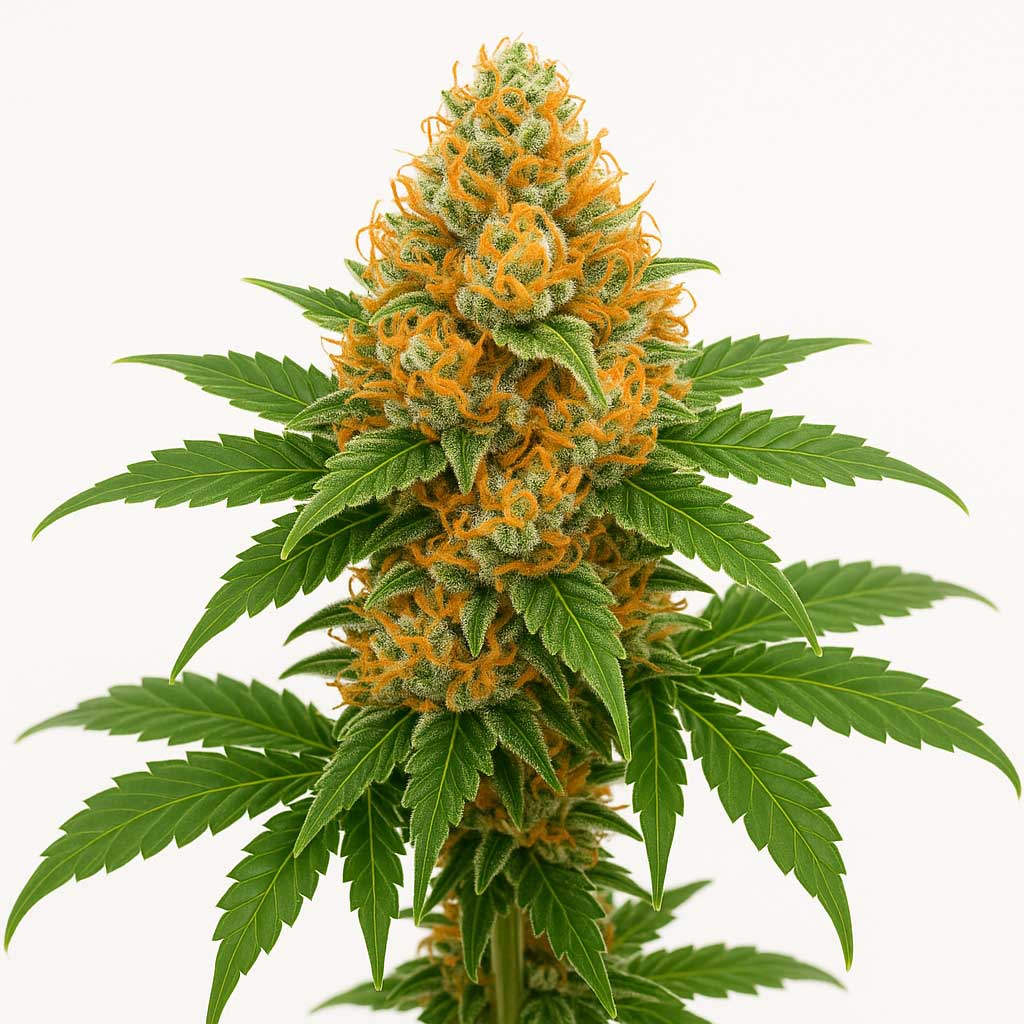Apple Betty (Cannabis Strain) — Strainpedia
Apple Betty is a captivating Hybrid cultivar derived from a cross between Sour Apple x Animal Cookies. Recognized for its unique aroma profile that balances sweet fruit with earthy undertones, it is frequently referenced in horticultural education for its robust growth and well-rounded chemical expression. The information below is intended strictly for scientific and botanical reference.
Quick Facts
| Genetics | Sour Apple x Animal Cookies (or sometimes Chem’s Sister x Sour Apple, depending on the breeder) |
|---|---|
| Variety | Hybrid (often slightly Indica-dominant) |
| Flowering Time | 8–9 weeks (indoors) |
| Yield Potential | 400–550 g/m² |
| Plant Height | 90–130 cm; moderate stretch; responds well to early training |
| Climate Preference | Temperate–Indoor Control (stable temperature and humidity is key) |
| Difficulty | Intermediate (requires good canopy management) |
Scientific & Botanical Overview
Apple Betty plants typically display a resilient structure with dense, medium-to-large buds. The flowers are often a mix of light green with subtle purple accents, covered in a high density of white, frosted trichomes, suggesting strong resin production. This cultivar exhibits a moderate stretch during the transition to flower, making canopy management techniques like topping and LST beneficial. The flowering cycle typically concludes within 8 to 9 weeks, rewarding the grower with a pungent, distinctively apple-scented biomass.
Effects & Use-Cases (Reported)
- Commonly reported effects: relaxing, happy, and euphoric; often noted as a “creeper” with clear-headed effects.
- Use-case context: frequently selected for unwinding after a long day or enhancing mood and focus during creative or social activities.
- Note: These are observational reports, not medical claims; outcomes are not guaranteed.
Aroma & Flavors
- Aroma: a prominent sweet and tart apple profile, complemented by rich earthy, pungent, and slightly spiced notes from the Animal Cookies lineage.
- Flavor: smooth and sweet on the inhale, dominated by apple and candy-like notes, finishing with a grounding, herbal, and earthy spice.
- Terpene associations: caryophyllene, limonene, humulene.
Tested Cannabinoid & Terpene Ranges
| Compound | Typical Range* | Notes |
|---|---|---|
| Δ⁹-THC | ~20–25% (reported up to 33%) | Concentration varies widely; often in the high-potency category. |
| CBD | ~0–1% | Generally present at low levels. |
| Caryophyllene | ~0.4–0.8% | Dominant terpene; contributes the spicy/earthy base and pepper notes. |
| Limonene | ~0.2–0.5% | Citrusy brightness; associated with mood elevation. |
| Humulene | ~0.1–0.3% | Subtle woodsy/hops aroma; adds complexity to the final scent. |
| Pinene | ~0.1–0.3% | Occasional pine notes; batch-dependent. |
*Ranges are literature- and lab-report-informed references and can differ with environment, harvest timing, post-harvest handling, and analytical methods.
Cultivation Notes
- Light Cycle: 18/6 vegetative; 12/12 flowering
- Humidity Targets: ~40–55% during flower; requires good ventilation to manage the dense bud structure and reduce risk of moisture build-up.
- Nutrition: Moderate feeder; responds well to an elevated potassium (K) schedule in late flower to support bud density.
- Training: LST and defoliation are highly effective for maximizing light exposure to the lower canopy and managing its spreading structure.
- Harvest Window: Early to Mid-October outdoors (Northern Hemisphere), requires protection from frost and heavy rains due to the tight buds.
Grower Notes (Week-by-Week Snapshot)
- Weeks 1–2 (Transition/Stretch): vigorous growth; manage height with topping/trellising; stabilize nutrient regimen.
- Weeks 3–4: flower site development; remove fan leaves that block future bud sites; ensure air circulation.
- Weeks 5–6: dense bulking phase; monitor for nutrient lockout; add support to branches as colas gain weight.
- Weeks 7–8: high resin production; aroma intensifies; begin flush (tapering N) when trichomes shift to milky.
- Weeks 9+: ripening; harvest when desired ratio of milky/amber trichomes is achieved; dry 18–21 °C, 50–60% RH.
Timelines shift with genotype and environment; prioritize plant health markers and trichome maturity over calendar counts.
Genetic Lineage
Apple Betty is predominantly attributed to the cross between Sour Apple and Animal Cookies. Sour Apple is an influential strain known for its pronounced fruity terpene profile, while Animal Cookies (a GSC cross) contributes potency, density, and a notable earthy depth. This combination results in a balanced hybrid that marries pungent, cookie-like effects with a striking, unique sweet-apple bouquet.
Research Insights
The combination of caryophyllene and limonene alongside high THC levels is commonly investigated in strains like Apple Betty for its potential in modulating the consumer experience, often cited for providing a blend of physical relaxation (caryophyllene) with a mood-enhancing, clear-headed effect (limonene). The user reports emphasize the “creeper” nature, suggesting a complex, delayed onset of effects requiring careful moderation.
Frequently Asked Questions
Is Apple Betty an Indica or Sativa?
Apple Betty is classified as a Hybrid, offering a balanced experience that tends to lean toward relaxation while retaining clear-headed, uplifting qualities.
What does Apple Betty smell and taste like?
It carries a dominant sweet and tart apple aroma, backed by deep earthy and pungent notes. The flavor is a mix of sweet apple candy and an herbal, spicy finish.
What are the typical effects?
Reported effects include deep happiness, euphoria, and relaxation, often described as a “creeper” that is smooth yet potent.
How long does Apple Betty take to flower?
Apple Betty typically flowers in 8–9 weeks indoors, with harvest in the outdoor Northern Hemisphere occurring in early to mid-October.
Is it suitable for beginners?
Apple Betty is considered Intermediate in difficulty. It requires attention to canopy management and environment control to prevent moisture issues in its dense buds.
Educational Disclaimer: This page is provided for scientific and horticultural reference only and does not constitute medical or promotional advice. Cannabis cultivation, possession, and use are regulated by local laws. Always comply with applicable legislation in your region.








